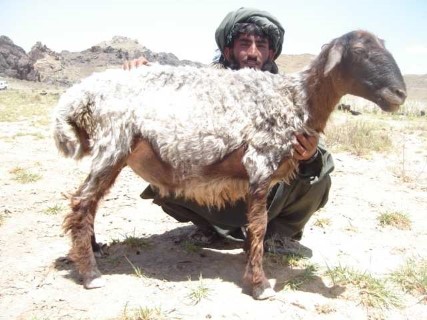The Waziri sheep, native to the rugged terrain of the Waziristan region in Pakistan, as well as the Bannu District in Khyber-Pakhtunkhwa, exemplify resilience and adaptability in challenging environments.
Characterized by their medium-sized stature, Waziri sheep possess a distinctive appearance that sets them apart. Their muscular body, predominantly white in color, exudes strength and vitality, reflecting their adaptation to the harsh landscapes of their native habitat. A striking feature of the Waziri sheep is their black head, which contrasts starkly with their white body, creating a visually striking profile. Additionally, these sheep are adorned with small ears that contribute to their overall appearance.
One of the most notable attributes of the Waziri sheep is their large tail, which serves both functional and aesthetic purposes. This tail, often prominent and robust, plays a crucial role in regulating body temperature and providing balance during movement, essential for navigating the rugged terrain of their natural habitat.
In terms of size, Waziri sheep are classified as microsheep, with females typically weighing less than 25kg at maturity. This compact size is a testament to their adaptation to the challenging environmental conditions of the Waziristan region, where resources may be limited, and agility is paramount for survival.
Overall, the Waziri sheep embody the resilience and resourcefulness of livestock breeds that have evolved in harsh and demanding landscapes. With their distinct physical features and adaptive characteristics, they continue to thrive in their native regions, contributing to the cultural and agricultural heritage of Pakistan's mountainous territories.
